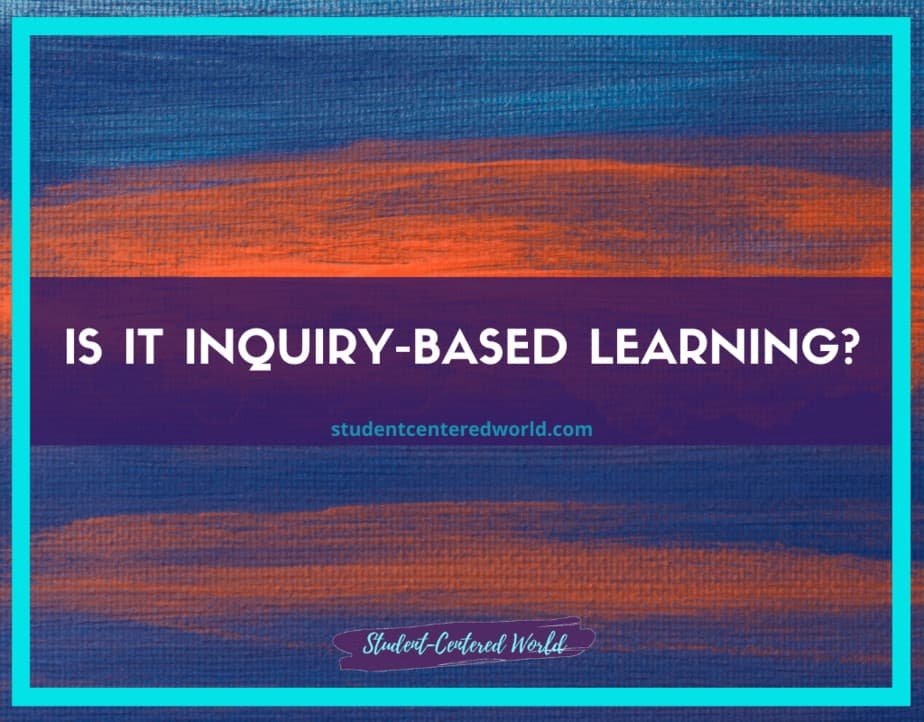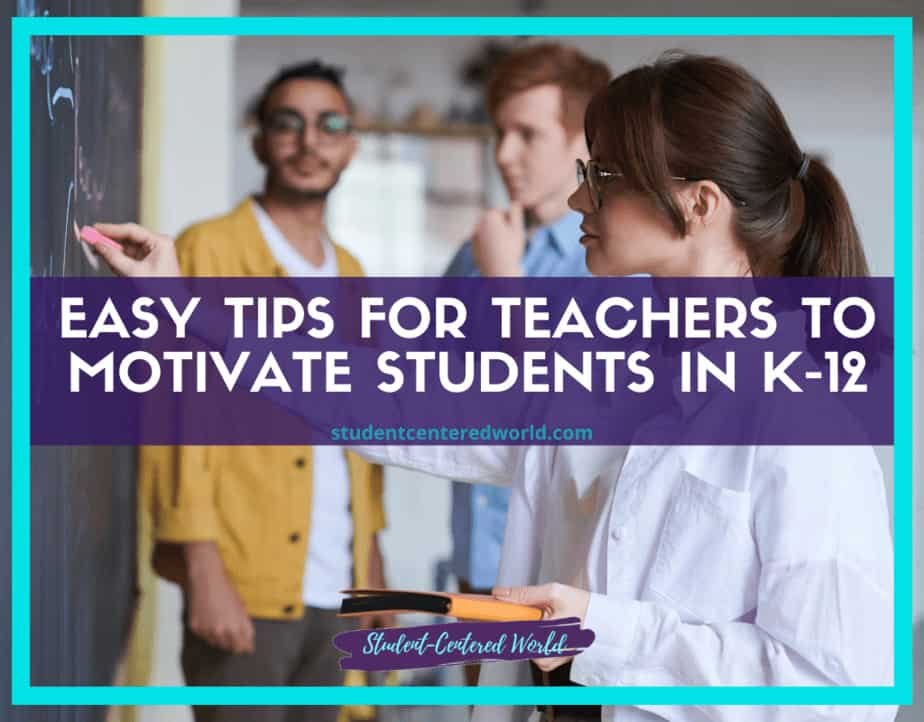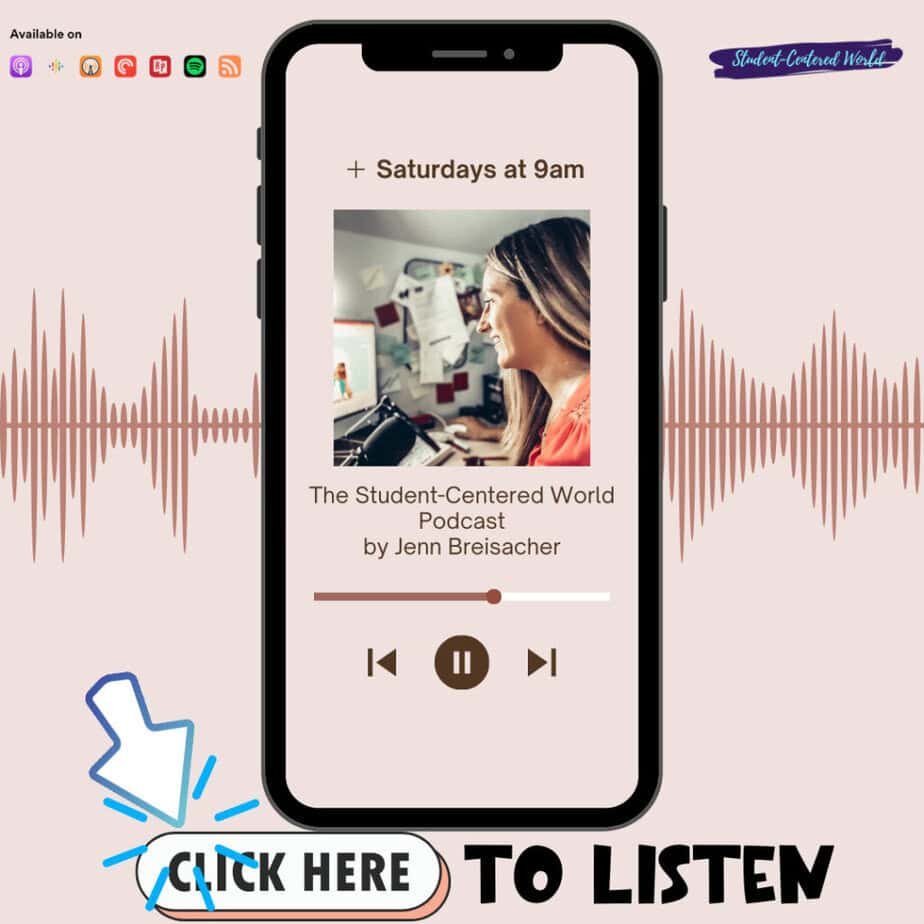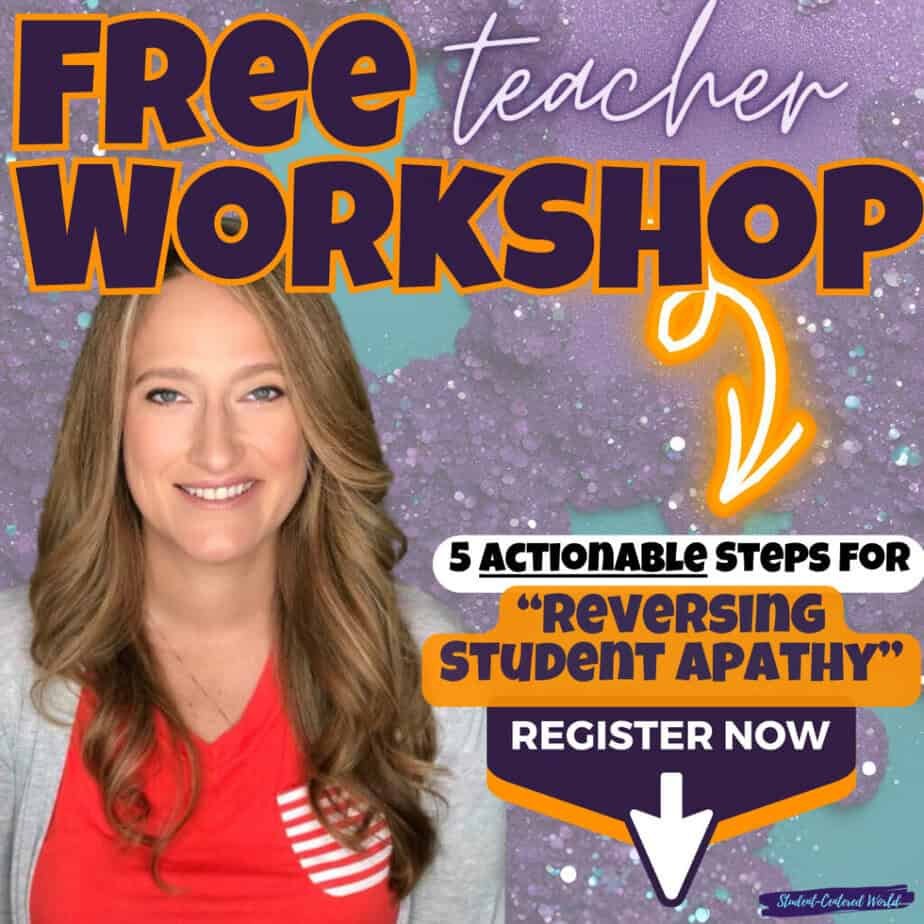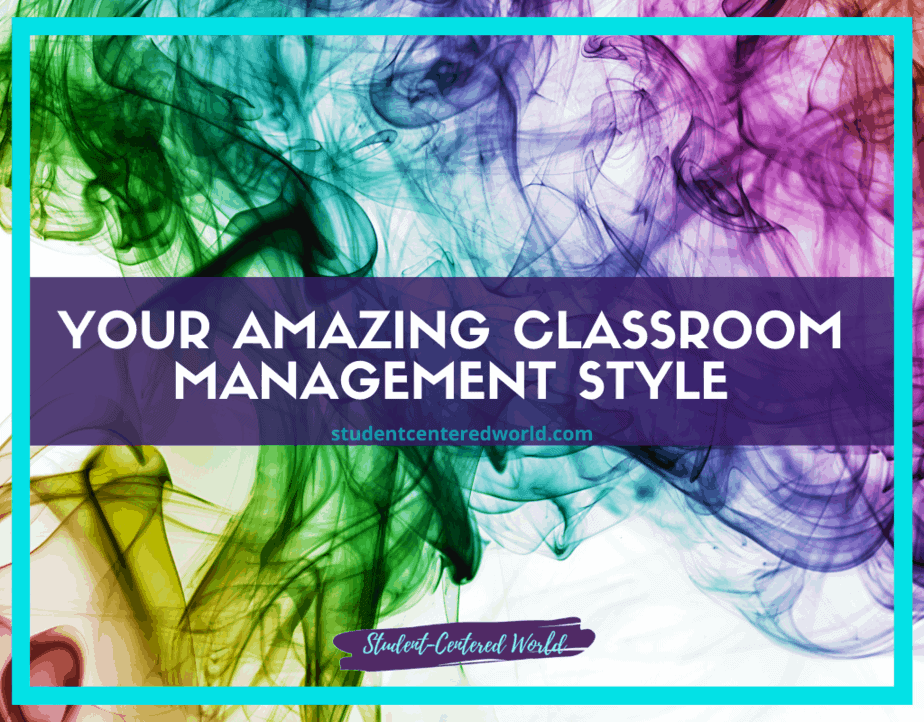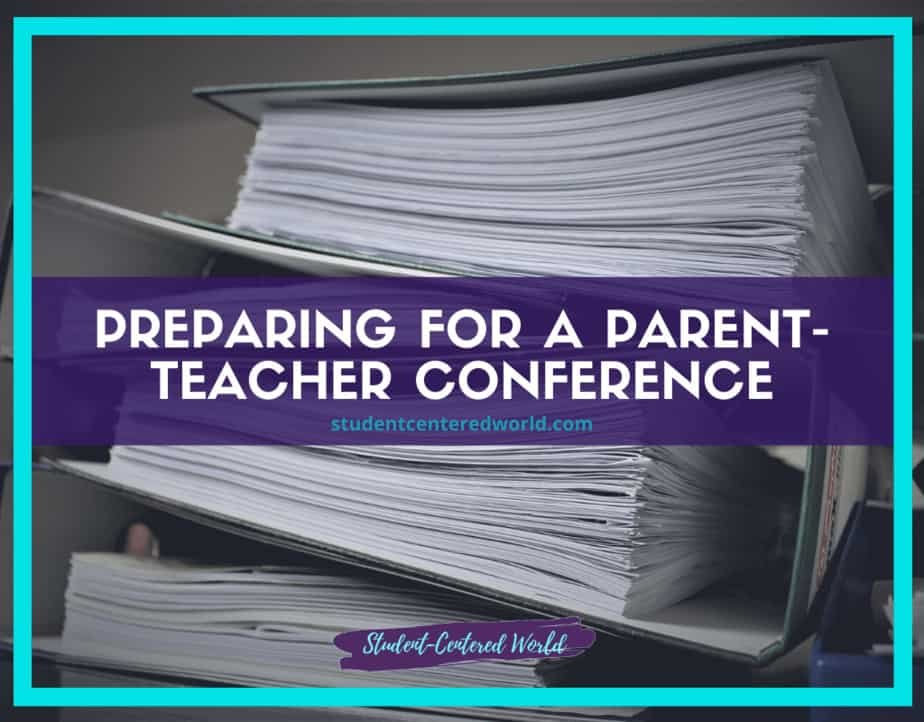How to Fix Student Apathy: Overcome This Classroom Problem
In the realm of education, the haunting specter of student apathy looms large, casting a shadow over academic institutions and hindering the learning process, leaving teachers not only asking how to fix student apathy, but wondering if a solution even exists. Apathetic students disengaged from the educational journey, pose a major problem not only for themselves but also for educators striving to ignite the spark of curiosity and intellectual pursuit.
However, amidst this seemingly insurmountable challenge lies an opportunity for a Classroom Renaissance — a paradigm shift that revitalizes education and reignites students’ passion for learning.
Understanding the Root Cause
To address student apathy effectively, we must first dissect its root cause. A prevailing issue is obviously visible with a lack of intrinsic motivation among students. In an era dominated by instant gratification, where social media bombardment and current events vie for attention, students often struggle to find genuine interest in academic pursuits. The shift to a virtual setting, accelerated by the events of last year, has further exacerbated this issue, distancing students from the traditional classroom environment and impeding social interactions crucial for their development.
Moreover, the pressure to excel academically, coupled with the relentless pace of school work, can overwhelm students, leading to a sense of disconnection and lack of interest in the learning process. As public school teachers and private school teachers grapple with unmotivated students, it becomes evident that traditional methods alone are insufficient to tackle this pervasive problem.
However, these are all merely symptoms and not the root causes of the Student Apathy Crisis. I dug deep and the research I found was absolutely eye-opening (and yet makes OH so much sense). You can read my findings here.
The Classroom Renaissance: A New Direction
In response to the challenges posed by student apathy, educators must embark on a journey of transformation, or what I like to call a Classroom Renaissance. This entails a fundamental shift from teaching to engaging, from imparting knowledge to fostering experiences that resonate with students on a deeper level. Building a supportive learning environment where students feel valued and empowered is paramount to cultivating intrinsic motivation and driving academic success.
Within the confines of public schools, where resources may be limited and students may feel they have little choice in their educational journey, educators face unique challenges. However, by implementing strategies such as a regular checkpoints sheet to track progress and provide feedback, teachers can create a structured framework for student growth and development. Additionally, leveraging technology in innovative ways, such as through the creation of educational blogs or interactive new episodes, can offer new avenues for engagement and learning.
Navigating the complexities of the teaching career requires a long-term perspective and a commitment to promoting both academic and physical health. As educators, we must recognize the impact of stress on our well-being, with high blood pressure and burnout becoming all too common in the profession. Implementing mindfulness practices, prioritizing self-care, and fostering a culture of support among faculty members are essential steps toward promoting physical health and resilience.
Furthermore, in an era marked by pervasive digital distractions and the allure of video games, educators must find ways to harness technology to enhance rather than detract from the learning experience. Whether through gamified learning platforms or virtual simulations, incorporating elements of video games into the curriculum can capture the attention of a generation of students accustomed to interactive and immersive experiences.
Amidst the challenges of remote learning and the lingering effects of the pandemic, educators must remain vigilant in addressing the needs of former students who may have fallen through the cracks. Reaching out to these students, providing additional support and resources, and offering opportunities for re-engagement can help mitigate the long-term effects of lack of engagement and disconnection.
Fostering student engagement requires a multifaceted approach that addresses the unique needs and challenges of today’s learners. By creating a supportive learning environment, leveraging technology in innovative ways, and prioritizing the well-being of both educators and students, we can empower the next generation to thrive academically and beyond. As we navigate the complexities of the teaching profession, let us remain steadfast in our commitment to promoting student choice, fostering a culture of engagement, and shaping a brighter future for all.
Strategies for Success: How to Fix Student Apathy
Understanding the underlying causes of apathy is crucial. Educators must recognize that disengagement can stem from various factors such as personal challenges, lack of relevance in the curriculum, or insufficient classroom dynamics. By fostering a supportive and inclusive learning environment, teachers can create a sense of belonging and motivation among students.
Emphasizing the importance of real-world connections and relevance in lessons can also make learning more meaningful. Additionally, leveraging innovative teaching methods and continuously adapting to the evolving educational landscape can significantly enhance student engagement and participation.
Effective strategies for combating student apathy encompass a multifaceted approach that addresses the diverse needs of today’s learners. Here are some actionable steps to guide educators on this transformative journey:
- Tap into Intrinsic Motivation: Instead of relying solely on external rewards or punishments, cultivate a sense of intrinsic motivation by making learning relevant and meaningful to students’ lives. Incorporate real-world examples and projects that allow for autonomy and creativity, fostering a sense of ownership over their education.
- Promote Student Choice and Agency: Empower students by offering opportunities for autonomy and self-directed learning. Allow them to choose topics of interest, projects, or learning pathways, providing a sense of agency in their educational journey.
- Build Strong Relationships: Invest time in building genuine connections with students, creating a classroom community where trust, respect, and empathy flourish. Establishing strong relationships not only enhances student engagement but also promotes mental health and well-being.
- Embrace Project-Based Learning: Adopt project-based learning approaches that encourage collaboration, critical thinking, and problem-solving skills. Engage students in hands-on activities that bridge the gap between theory and practice, fostering a deeper understanding of concepts.
- Integrate Technology Thoughtfully: Leverage electronic devices and digital platforms as tools for learning, rather than distractions. Integrate technology thoughtfully to enhance the learning experience, providing opportunities for creativity, exploration, and innovation.
Now, the issue here is that none of this is anything new; we’re told to do all of these things all of the time and we certainly are trying. The problem is that the way we do this effectively in today’s classroom is not the same way we were able to do it even just 10 years ago. Knowing what we now know about the causes of the Student Apathy Crisis, we must make some simple adjustments to make these strategies effective. But, of course, no one is talking about that and, as it so often is in education, we’re
Empowering Educators: A Call to Action
As educators, we hold the power to reshape education and revitalize student engagement within our classrooms. It is imperative that we embrace this responsibility with creativity, determination, and a commitment to continuous improvement. By fostering a supportive learning environment, cultivating intrinsic motivation, and implementing effective strategies, we can empower students to thrive academically and beyond.
Yet, we cannot overlook the pervasive issue of lack of motivation among students, especially in the context of high school students and middle school students. Student behavior often reflects this lack of motivation, manifesting as disinterest in school work, incomplete homework assignments, or disruptive conduct in the classroom. This is not just a minor inconvenience; it’s a big deal with far-reaching consequences for academic success and personal growth.
Research from the Pew Research Center highlights the alarming trend of student disengagement, with half of teachers reporting challenges in motivating their students. Addressing this issue requires more than just a checklist or a one-size-fits-all approach. It demands a multifaceted action plan that considers the unique needs and interests of each individual student.
Professional development plays a crucial role in equipping educators with the tools and strategies necessary to navigate these challenges effectively. By investing in ongoing professional growth and learning, teachers can stay abreast of best practices and innovative approaches to student engagement. This includes allocating extra time for collaborative planning, sharing effective practices, and refining instructional techniques.
Furthermore, creating a classroom environment where students feel heard, valued, and respected is essential. Building relationships based on trust and empathy establishes a safe space for students to express themselves and take ownership of their own education. Notice statements and regular checkpoint sheets can help track progress and provide timely feedback, guiding students in the right direction throughout the school year.
Incorporating student choice and autonomy into the learning process empowers students to take ownership of their education and pursue topics of personal interest. Whether it’s through project-based learning, individualized assignments, or collaborative activities, giving students a say in their learning journey fosters a sense of agency and investment in their academic endeavors.
Moreover, in the face of tough times and unprecedented challenges, educators must prioritize the well-being of their students. This includes addressing not only their academic needs but also their physical and mental health. Encouraging physical activity, promoting healthy habits, and providing access to resources for mental health support are integral aspects of creating a supportive learning environment.
As we navigate the complexities of modern education, let us not lose sight of our ultimate goal: to nurture the next generation of learners and leaders. By embracing effective ways to engage students, setting high standards for academic excellence, and fostering a culture of continuous improvement, we can shape a brighter future for young people across the United States and beyond.
A Brighter Future Awaits
In the quest to fix student apathy, we must recognize that there is no one-size-fits-all solution. Instead, it requires a concerted effort from educators, school leaders, and stakeholders to reimagine education and pave the way for a brighter future. By harnessing the transformative power of the Classroom Renaissance and implementing effective strategies, we can reignite students’ passion for learning and equip them with the skills they need to succeed in the ever-changing landscape of the 21st century.
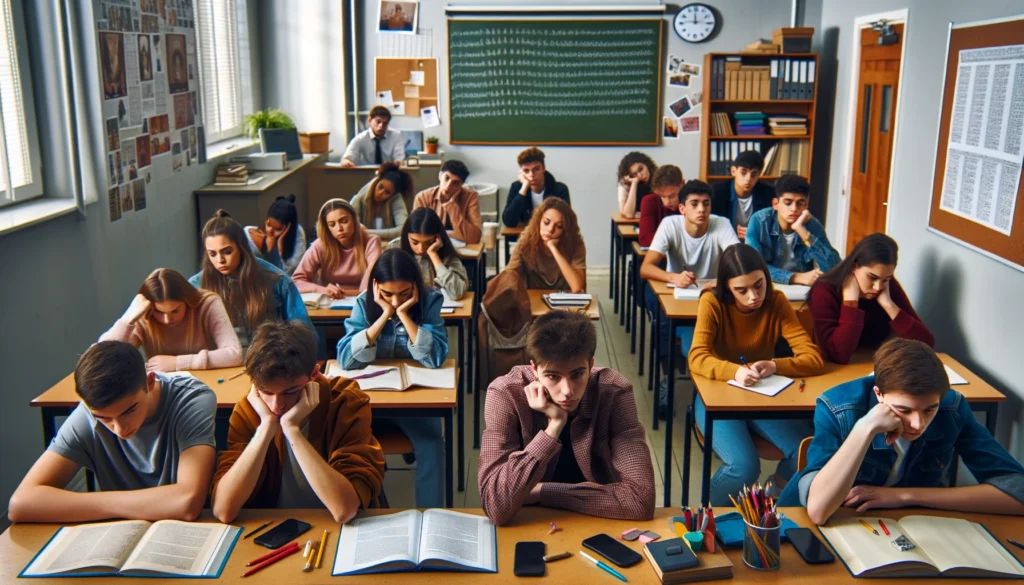
There is no such thing as a one-size-fits-all solution to student apathy and disengagement. It requires a concerted effort from educators, administrators, and stakeholders to address the root causes and implement effective strategies for change. By prioritizing student’s interests, building strong relationships, and fostering a culture of growth and innovation, we can empower students to become active participants in their own education and thrive in the ever-evolving landscape of the 21st century.
At the end of the day, it’s not just about academic performance; it’s about fostering a love of learning that transcends the classroom walls and prepares students for success in the real world. Together, let us move forward with intention and innovation, ensuring that every student has the opportunity to reach their full potential.
If you’re ready to take the first step towards reviving student engagement and transforming your classroom, I invite you to join me for my free workshop “Reversing Student Apathy” designed to equip educators with innovative strategies that work.
This interactive workshop will provide an invaluable opportunity for educators to explore the complex factors contributing to student apathy. By examining underlying causes and discussing broad strategies, participants will be equipped to make meaningful changes in their teaching methods. The sessions are designed to be engaging and collaborative, allowing educators to share experiences and develop a collective approach to overcoming challenges in student engagement.
The workshop will also emphasize the importance of community and network building among educators. Participants will be encouraged to connect with one another, sharing insights and strategies that have been effective in their own classrooms. This network will serve as a continued resource, offering ongoing support as educators implement new tactics to inspire their students.
Highlights of the workshop include:
- A deep dive into the roots of student apathy and its impact on learning.
- General strategies for enhancing classroom dynamics to better engage students.
- The role of educator-student relationships in fostering a more inviting and interactive learning environment.
- Broad discussions on integrating innovative approaches to teaching that resonate with today’s students.
Each educator attending the workshop will gain access to a variety of general resources aimed at enriching the educational experience. Furthermore, an online community will be available for post-workshop engagement, allowing for sustained collaboration and support among peers.
This workshop is an excellent fit for teachers, administrators, and educational professionals who are passionate about reversing the trends of student disengagement and nurturing a more dynamic and responsive educational atmosphere. It presents a unique chance to join forces with like-minded professionals determined to make a significant impact on the academic and personal lives of their students.
As we strive to address these pressing challenges, the workshop offers a platform to unite and empower educators from diverse backgrounds. Registration is essential as spaces are limited, ensuring a focused and productive environment for all participants.
Don’t miss this chance to be part of a pivotal movement in education. Please register today and be part of the solution, helping to reignite enthusiasm and engagement among students and setting them on a path toward a more successful and fulfilling academic experience. Join us as we take proactive steps toward a brighter educational future.
As we navigate these challenging times, let us remember that every challenge is also an opportunity — an opportunity to redefine education, inspire minds, and shape the next generation of learners. Together, we can make a difference. Let’s rise to the occasion and create a world where every student feels valued, empowered, and eager to learn.
